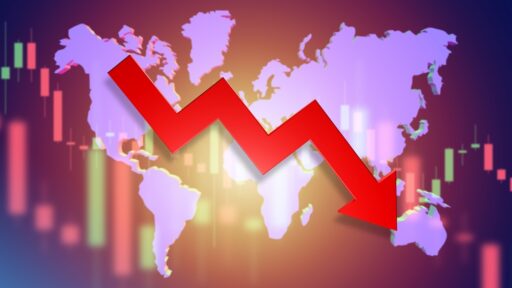MARKET SCENARIO
During the month of August 2023, data was released which confirms that many markets are contracting. Especially in Europe.
Unioncamere del Veneto has published the data relating to the second quarter of 2023. After a stalemate at the end of 2022 and a timid growth at the beginning of the year, there was a slowdown in total orders of 4.8% (-4.4% domestic and – 5.9% foreign).
Following that is news on Germany – our leading export market with a 12% share – which turns out to be the G7 country with the worst GDP growth forecasts in 2023. (Source: International Monetary Fund)
And a few days ago news that the companies that filed for bankruptcy in the US are at their highest levels since 2010 (Sole 24 Ore dated 13 August 2023). Companies from all sectors. The latest bust concerns the Yellow Corporation transport group, one of the major players in transport for the past for 99 years, with 30,000 employees.

Rounding out the picture is China, which is no longer growing as it used to and touched a record 21% for youth unemployment in June (with censorship adjusting the data). A worrying situation also in the West and which Biden called “a time bomb”. In the past few days we’ve also learned of the bankruptcy of the Evergrande real estate company – 340 billion dollars of debt – which risks triggering a domino effect.
WHAT TO DO
Faced with a worrying situation – “Europe in recession”, headlined the front page of the Sole24Ore financial newspaper dated 20th August – it must be said that not all of our small and medium-sized enterprises are seeing a negative 2023. In fact, it is also necessary to think in terms of non-European markets and products. Then things change.
In any case, the international situation suggests caution. So here are some suggestions so as not to arrive unprepared when our markets too begin to contract:
- Monitor the evolution of your markets more frequently: do it habitually, at least once a year. In this regard, I point out a new tool useful for this purpose, Market Insights.
- Periodically check what your competitors (especially the first in the class) are doing. Today on the net you will find a lot of information to get a clear idea of what strategies they are pursuing, what new products they are proposing, in which fairs they are exhibiting, etc.
- Once you have identified new markets on which you are not yet present, you can use Matchplat to search for new customers, distributors or agents.
- Linkedin/Sales Navigator then, is useful for identifying the name and surname of these potential customers and making a first contact through this platform.
- Finally, when approaching these new contacts – via Linkedin, email or telephone – act without haste and in a personalized way.
The suggestions described above are all digital tools, within the reach of small and medium-sized enterprises; also in terms of costs. Tools that I use every day and make available to the companies I work with on export issues. Here is the ebook that I recently published and which presents them in a complete way: 8 Digital Tools for SMEs: A Manual for Improving Export Strategies.
Traditionally we deal with exports by relying on trade fairs. They are very important, but also increasingly expensive, and a small-medium company must make careful choices.
COURAGE AND VISION
Beyond the short-term actions, however, an effort would be needed to understand the direction we want to give to our companies in the medium-long term. The moment we are experiencing is complex and full of challenges and therefore requires a rethinking of business models (especially if your company is several years old).
On the subject, I would like to point out an interesting article in the Corriere della Sera newspaper, dated 14 August 2023: “geopolitical crises, the demographic winter, the suffering of the middle class in the West, climate change, the scars left by the covid, artificial intelligence … against a present full of unknowns, we often react with short-term actions. We are no longer able to look at the big picture, the ability to look into the distance. Above all, overcoming two limits: contingency and polarization. We are looking for immediate answers, which elude the effort of a confrontation. Elements necessary today to interpret an extremely complex situation.” (Stefano Simontacchi)
For more information about my business: https://www.progetticommerciali.it/
